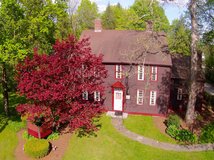Old School indeed
Forty years ago when I was at St Michael's High School suffering discipline at the wrinkled hands of scary nuns you could learn a lot about another school from their basketball team. Back then Hopkins Acadamy was a winner.
So it comes as no surprise that they hold up well when compared academically to the paragon of education in the Happy Valley, Amherst Regional High School. According to SchoolDigger.com, using the new MCAS scores just announced, ARHS has a rating of 123 out of 325 or top 38% in the state. Hopkins Academy on the other hand has a ranking of 94/325 or top 29%
But the astounding difference is in the financial component of each operation. According the Mass Dept of Education website, Amherst is in the top 11% statewide for costs per student at $17,916 while our neighbors in Hadley manage to run their schools coming in at the bottom 1% for costs, or $9,770 per student.
Thus Hadley educates its 301 middle and high schools students for a cost savings of $2,508,233 had they been enrolled in the ARHS and ARMS. Of course one telling difference is Hadley only has one administrator making over $85K and the Amherst Region has over 20.
Yes, Hadley has less of a minority population and a much higher percentage of home ownership (three quarters vs Amherst's one half). But they still have farms, like they did 40 years ago, so kids can learn the value of hard work. And that is priceless.
Tale of the Tape according to US News:
Hopkins Academy
Amherst Regional High School






























